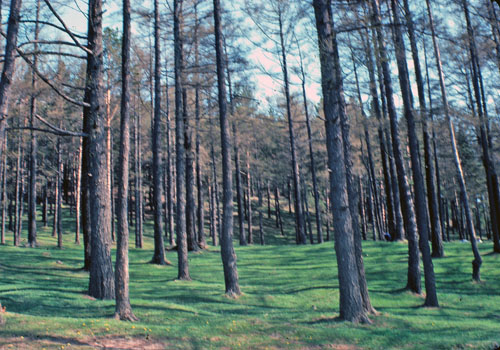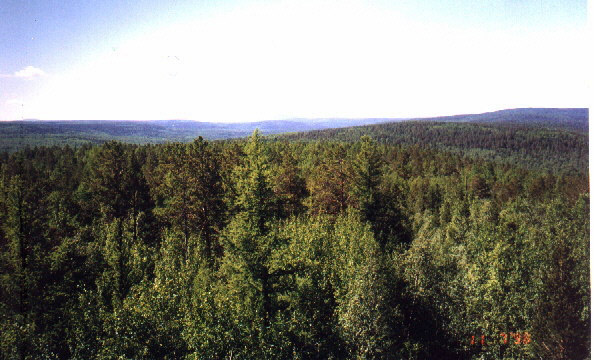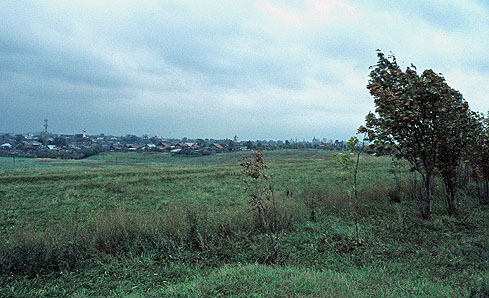
Siberian forest near Irkutsk
The taiga is a biome--a biome is a type of habitat that is determined by a specific climate--which is located just south of the tundra biome. It is characterized by coniferous (evergreen) forests, really just endless, endless expanses of forest. This covers much of Russia, especially Siberia.
The winters in the taiga are long and very cold (-65 to 30° F) with some snowfall. The
summers are short, warm (up to 70° F), rainy and humid. Spring and fall tend to be almost non-existent.
The taiga does not have as many plant and animal species as some of the other biomes, but it does have insects--lots of them--especially in the summertime.
Most plants are coniferous trees, evergreens like pine, spruce, hemlock, fir and larch. The Scotch pine is especially prevalent in Siberia.
Where there are some deciduous trees, they tend to be alder, aspen and birch.

View of the taiga from above


Suzdal is an example of a region in which the forest has been cleared.